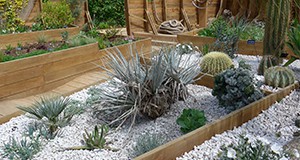
Teaching and demonstration gardens are places where the public can learn about different types of gardens and landscapes. This 10-page fact sheet discusses the various types of gardens, how to plan and develop a demonstration garden, logistical and design considerations, and educational programming. Written by Gail Hansen, and published by the UF Environmental Horticulture Department, July 2015.
http://edis.ifas.ufl.edu/ep524
Tag: Demonstration Gardens
Demonstration Gardens in the University of Florida Cooperative Extension Service
 UF/IFAS Extension supports a network of demonstration gardens throughout the state. These gardens showcase plants and practices appropriate for their locations and are open to the community free of charge. Learning opportunities abound for home gardeners and landscape professionals on design, planting, and maintenance procedures. The gardens typically have interpretative materials available, including signs, brochures, and self-guided tours. Many are sites for gardening festivals, workshops, and plant sales. This 27-page directory was written by Sydney Park Brown, Kim Taylor, and Emily Eubanks, and published by the UF Department of Environmental Horticulture, March 2014.
UF/IFAS Extension supports a network of demonstration gardens throughout the state. These gardens showcase plants and practices appropriate for their locations and are open to the community free of charge. Learning opportunities abound for home gardeners and landscape professionals on design, planting, and maintenance procedures. The gardens typically have interpretative materials available, including signs, brochures, and self-guided tours. Many are sites for gardening festivals, workshops, and plant sales. This 27-page directory was written by Sydney Park Brown, Kim Taylor, and Emily Eubanks, and published by the UF Department of Environmental Horticulture, March 2014.
http://edis.ifas.ufl.edu/ep108
Design and Implementation of Edible Plant Demonstration Gardens: A Case Study of the Putnam County Extension Edible Garden (ENH1205/EP466)
 Demonstration gardens are a collection of plants assembled and organized in a manner that allows garden visitors to access and study them. Most gardens are designed with a particular focus and include plants that support the purpose and educational theme of the garden. This case study features an edible plant demonstration garden that was designed and installed in Hastings, Florida, on the Extension office grounds. The UF/IFAS program and the Partnership for Water, Agriculture, and Community Sustainability (FPWACS) designed and implemented the demonstration garden using a step-by-step process that is discussed in this 15-page fact sheet written by Gail Hansen, Joseph Sewards, Rebecca Almeida, and Andrew Dunn, and published by the UF Department of Environmental Horticulture, November 2012.
Demonstration gardens are a collection of plants assembled and organized in a manner that allows garden visitors to access and study them. Most gardens are designed with a particular focus and include plants that support the purpose and educational theme of the garden. This case study features an edible plant demonstration garden that was designed and installed in Hastings, Florida, on the Extension office grounds. The UF/IFAS program and the Partnership for Water, Agriculture, and Community Sustainability (FPWACS) designed and implemented the demonstration garden using a step-by-step process that is discussed in this 15-page fact sheet written by Gail Hansen, Joseph Sewards, Rebecca Almeida, and Andrew Dunn, and published by the UF Department of Environmental Horticulture, November 2012.
http://edis.ifas.ufl.edu/ep466